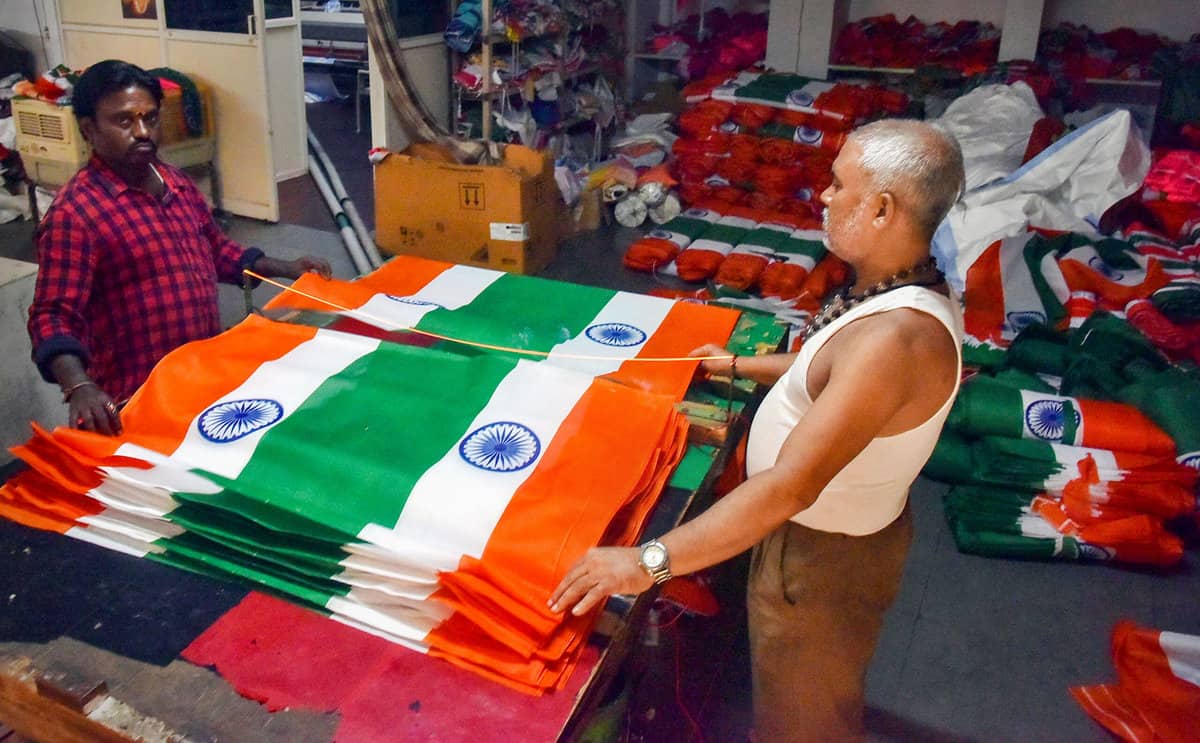
Hyderabad: As India celebrates its 75th Independence Day, the Union government launched a new initiative, “Har Ghar Tiranga” and Prime Minister Narendra Modi has appealed to Indians to display the national flag on every house.
In Telangana, the government is distributing national flags free of cost to the public and asking them to display them on their houses and offices.
However, the national flag is governed by The Prevention of Insults to National Honour Act 1971 and violations amount to legal proceedings against the violator.
What kind of material can be used for making the Indian flag?
The Flag Code of India 2002, which was amended on December 30, 2021, allowed the use of polyester or machine-made flags. The national flag can now be made in polyester, cotton, wool, silk or khadi. It can either be woven by hand or by a machine. Before the December 30, 2021 amendment, polyester or machine-made flags were not permitted.
Where can the national flag be displayed?
The Flag Code of India states that “a member of the public, private organization, or educational institute is allowed to hoist the national flag on all days and occasions, ceremonial or otherwise, consistent with the dignity and honour of the flag.”
On which days and at what time can the national flag be flown?
A recent amendment made by the GOI on July 20, 2022, stated that the national flag can now be hoisted both day and night, only if it is displayed in the open or on the house of a member of the public. Before this amendment, the Tricolour could only be hoisted between sunrise and sunset.
What is the appropriate size and ratio of the national flag?
The national flag shall be of any size but should always be rectangular, with the length-to-height ratio fixed at 3:2.
How can the national flag be displayed?
- The national flag must be displayed distinctly, and occupy an honorable position.
- The saffron band of the flag must always come on the top, and it should never be displayed in an inverted way.
- A damaged or untidy flag must never be displayed.
- It must never be used as a rosette, bunting, festoon, or in any other form for decoration.
- How should the national flag be disposed of?
- The damaged national flag must be disposed of as a whole in private and can be done by either burning or any other method that would give due regard to its dignity. Furthermore, national flags made of paper should never be disposed of on the ground after the citizens have waved them. The paper flags must be discarded with due regard to their dignity.
How do you avoid insulting the national flag?
According to Section 2 of the Prevention of Insults to National Honour Act, 1971, here are some of the instructions that must be followed to ensure that the National flag is not insulted:
- The tricolour must never be used as a means of drapery of any kind, including in private funerals
- There must be no lettering on the tricolour
- It should never be used to deliver, wrap, or receive things
- What is the correct way to display the tricolour?
- If the flag is flown on a public building, it must be flown from sunrise to sunset, irrespective of the weather conditions.
- During the hoisting of the flag, the movement must always be brisk, whereas, while lowering, it should be slow.
What the law says on insult to the national flag:
Whoever in any public place or in any other place within public view burns, mutilates, defaces, difiles, disfigures, destroys, tramples upon or 1 [otherwise shows disrespect to or brings] into contempt (whether by words, either spoken or written, or by acts) the Indian National Flag or the Constitution of India or any part thereof, shall be punished with imprisonment for a term which may extend to three years, or with fine, or with both.
Enhanced penalty on second and subsequent convictions: Whoever, having already been convicted of an offence under the section, is again convicted of any such offence shall be punishable for the second and for every subsequent offence, with imprisonment for a term which shall not be less than one year.



